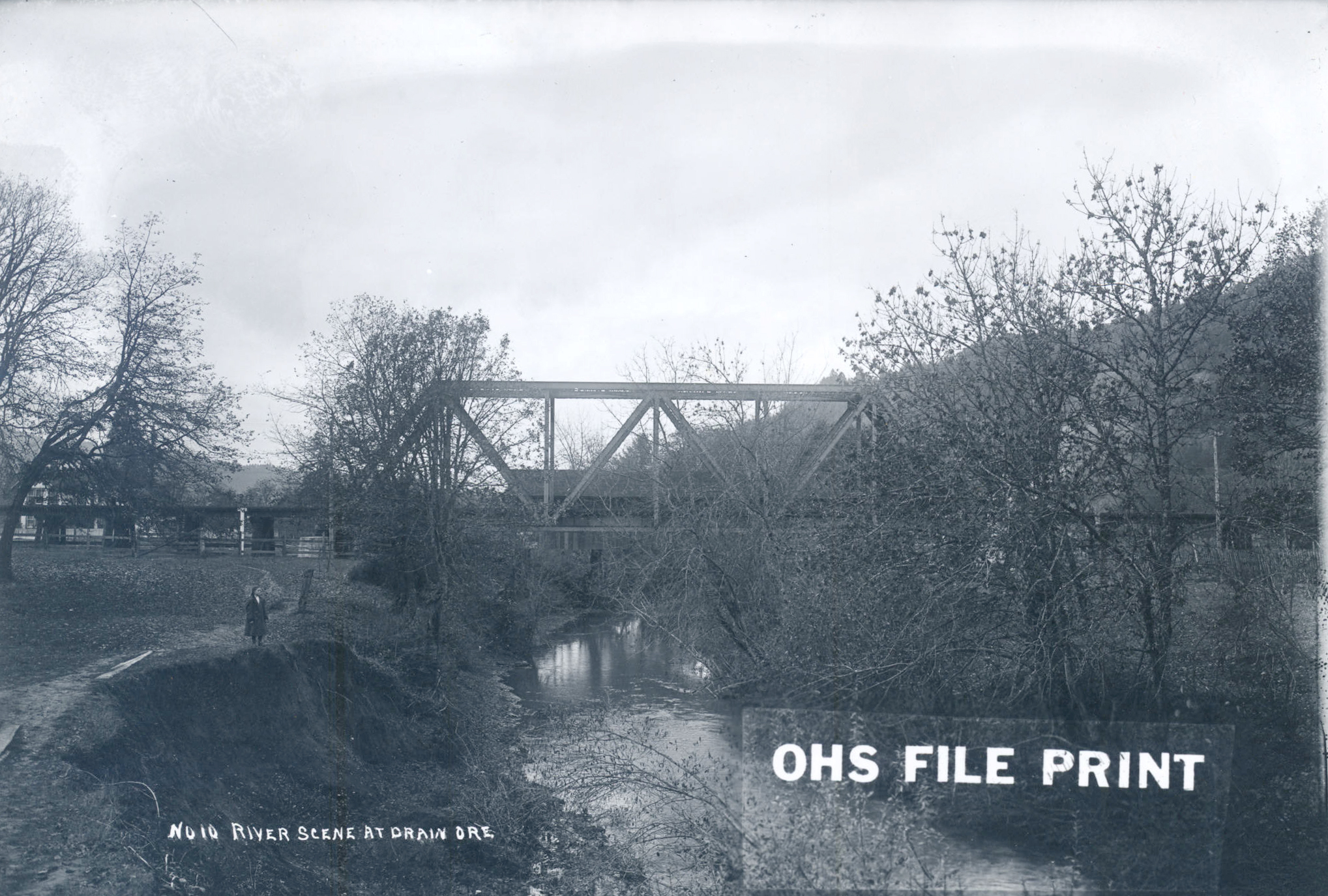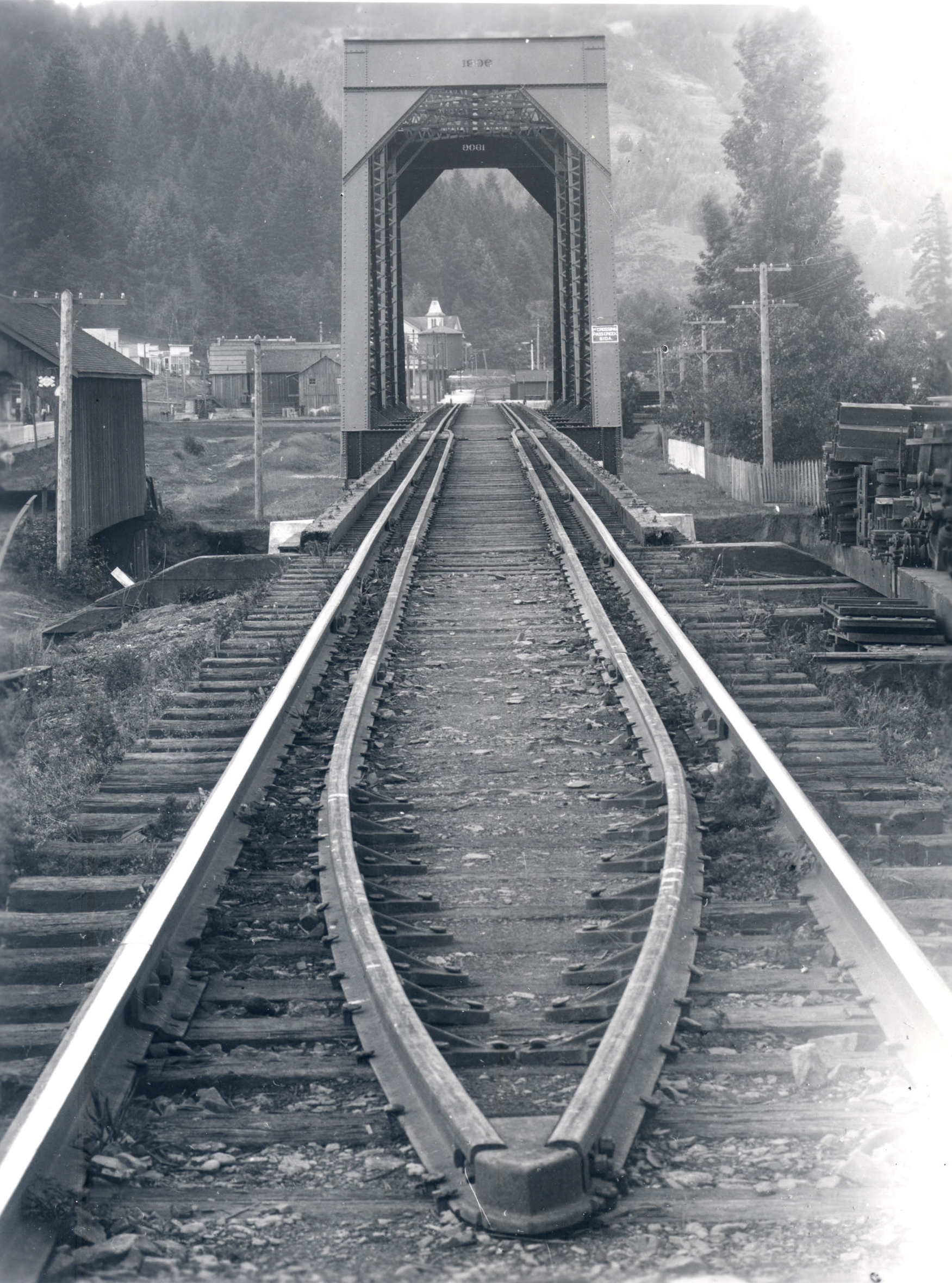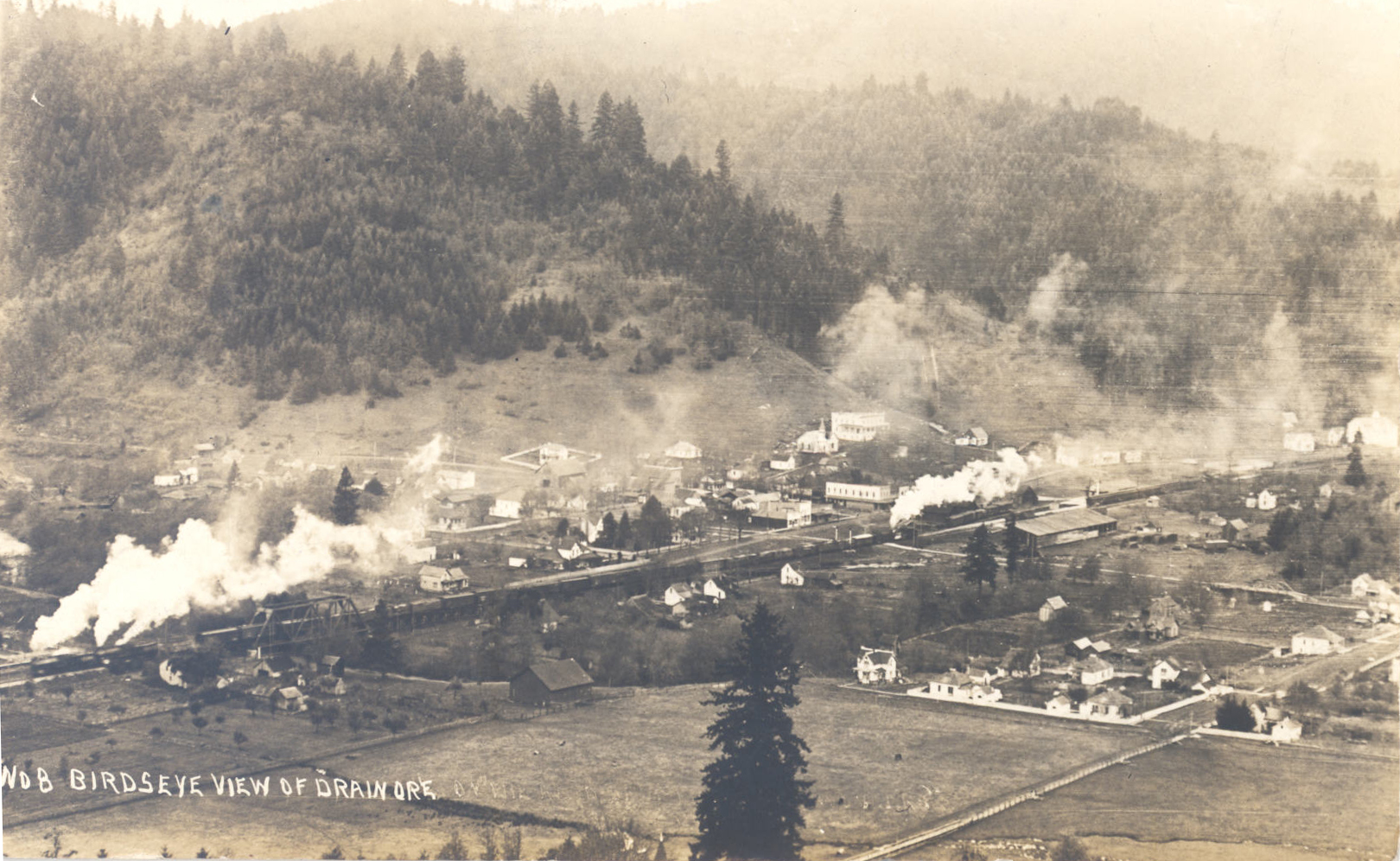The Pass Creek Covered Bridge was built in 1925 on North First Street in Drain, where it replaced an earlier 1876 covered bridge that was part of the Overland Stagecoach Route. By the early twenty-first century, it was one of fifty-one covered bridges in Oregon, all constructed between 1914 and 1966, and one of only a few located within a city’s limits. The bridge may have been constructed as early as 1906, which would make it the oldest covered bridge still standing in Oregon. The hand-hewn structural timbers in the modern truss may date from the 1876 bridge, which would make the timbers the oldest lumber in use in a bridge in the state.
In 1861, Charles Drain bought a 320-acre donation land claim from Jesse Applegate. He sold 60 acres of the claim to the Oregon & California Railroad for a dollar in 1872 and platted the town. In 1876, an extension of the Overland Stagecoach was opened from Roseburg to Scottsburg on the Oregon Coast, with Drain as the northern stopping point. The original Pass Creek Bridge, a covered wooden bridge, was built in about 1876 adjacent to a wooden covered railroad bridge as part of the Overland route. This road was one of the primary routes to the coast until 1906, when the Southern Pacific Railroad constructed a line from Eugene to Coos Bay. The site of the Overland Stagecoach route and original bridge over Pass Creek was on North First Street.
The current Pass Creek Covered Bridge was constructed in 1925 as a replacement to the 1876 bridge. In 1969, the City of Drain rebuilt the rafter and cedar-shingle roof after damage from a snowstorm, and the bridge was closed to vehicular traffic in 1981 due to rot and insect damage. On July 13, 1981, the Roseburg News-Review reported that the city had approved moving the bridge “to a point on Pass Creek behind the Community Building where it would be used as a foot bridge.” In 1987 and 1988, the bridge was relocated a few hundred feet downstream to a city park, where it serves as a pedestrian bridge over Pass Creek. During the same period, a concrete bridge was built across the creek at North First Street.
Like most of Oregon’s covered bridges, the Pass Creek Bridge is a timber Howe Truss. “The distinctive feature of the Howe Truss, developed in 1840,” Nick and Bill Cockrell wrote in 1989, “was the adoption of iron stress rods to give support to the wooden truss members.” The Pass Creek Bridge is unusual in Oregon because it is covered with cedar siding, and it includes hand-hewn timbers that were likely repurposed from an earlier bridge. The architectural features of the Howe Truss bridge design are exposed and readily visible on the inside of the ridge.
It is possible, as historian George Kramer has suggested, that the Pass Creek Covered Bridge was constructed in 1906 and was refurbished in 1925. The uncertainty may be a result of a confusion between two different bridges in Drain. There is documentation that the Oregon California railroad bridge spanning Pass Creek, a covered wooden bridge located next to the North First Street structure, was replaced in 1906, and it is may be that event that locals remember as the construction of the road bridge. Even if the official construction date was 1925 and not 1906, the Pass Creek Covered Bridge is still one of the oldest surviving covered bridges in Oregon.
Severe degradation of one of the 65-foot hand-hewn chords forced the closure of the bridge to pedestrian traffic in 2014. Because of its closure and at-risk status, in 2015 the Pass Creek Covered Bridge was chosen as a pilot project for digital preservation through 3D laser scanning by the Oregon Department of Transportation.
While construction of timber bridges ceased in most of the United States with the availability of steel in the twentieth century, Oregon continued use of the type into the 1950s due to the availability of local timber and the expense of shipping steel from the East Coast mills.
Click here to see a 3D laser scanning of the bridge by ODOT.
-
![The covered bridge can be seen behind the railroad bridge in this early photo of Pass Creek]()
Pass Creek bridges.
The covered bridge can be seen behind the railroad bridge in this early photo of Pass Creek Courtesy Oreg. Hist. Soc. Research Library, 15191
-
![The covered bridge can be seen to the left of the first railroad crossing on Pass Creek.]()
Pass Creek bridges.
The covered bridge can be seen to the left of the first railroad crossing on Pass Creek. Courtesy Oreg. Hist. Soc. Research Library, SP collection, 43813
-
![]()
Drain, Oregon.
Courtesy Oreg. Hist. Soc. Research Library, 15189
pass creek compressed
/media/uploads/PasCrBrdg4small_Converted_720.mov
pass creek
/media/uploads/PasCrBrdg4small.avi
Related Entries
-
Jesse Applegate (1811-1888)
Jesse Applegate, an influential early Oregon settler, is most remembere…
Related Historical Records
Map This on the Oregon History WayFinder
The Oregon History Wayfinder is an interactive map that identifies significant places, people, and events in Oregon history.
Further Reading
Burrow, Rebecca, Chris Bell, and Chris Leedham. Oregon’s Historic Bridge Field Guide. Oregon Department of Transportation, 2013
Centennial Pictorial History of Drain, Oregon: 1872-1972. Drain: Centennial Research Committee, 1972.
Cockrell, Bill, and Nick Cockrell. Roofs Over Rivers: The New Guide to Oregon’s Covered Bridges. Jacksonville, Ore.: Oregon Sentinel, 1989.
"ODOT Covered Bridge Index: Pass Creek Covered Bridge." Available from the Oregon Department of Transportation, Bridge Division, Salem, 2015.




